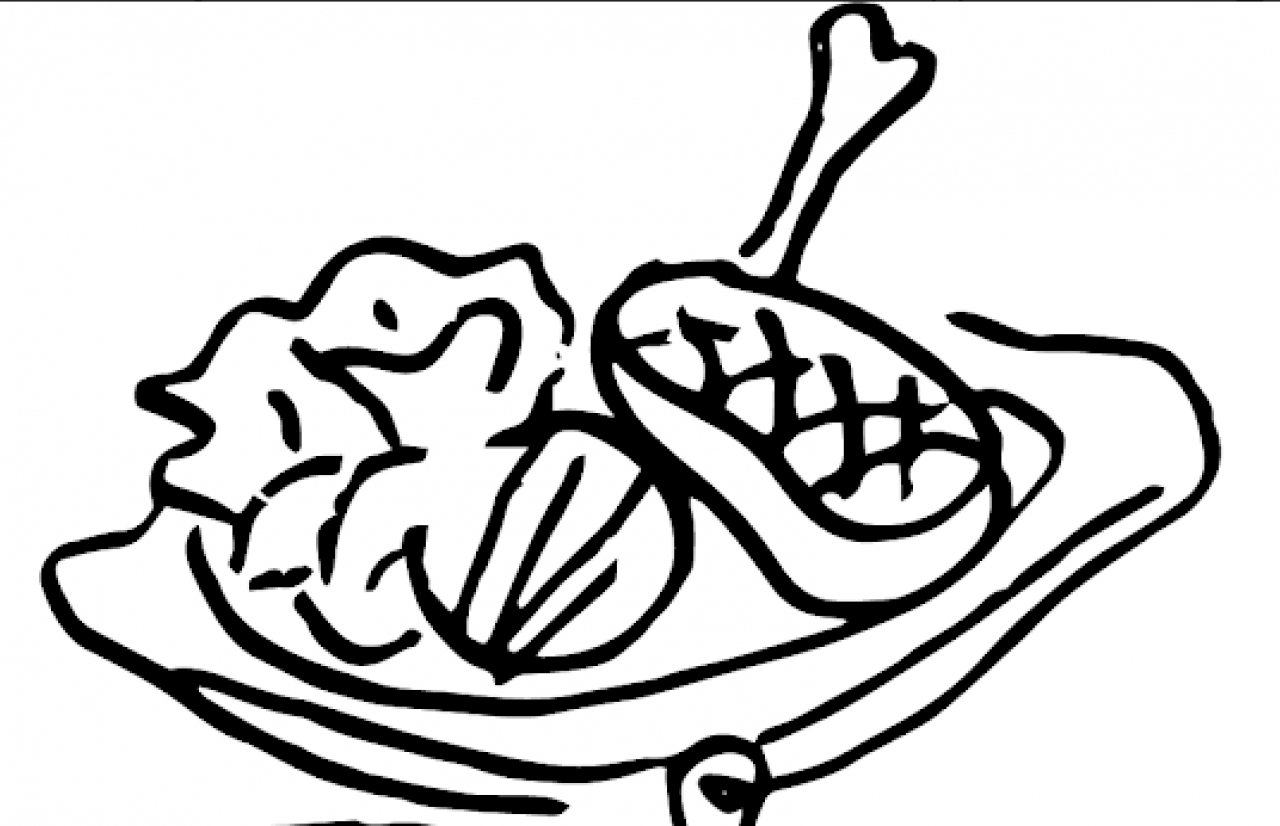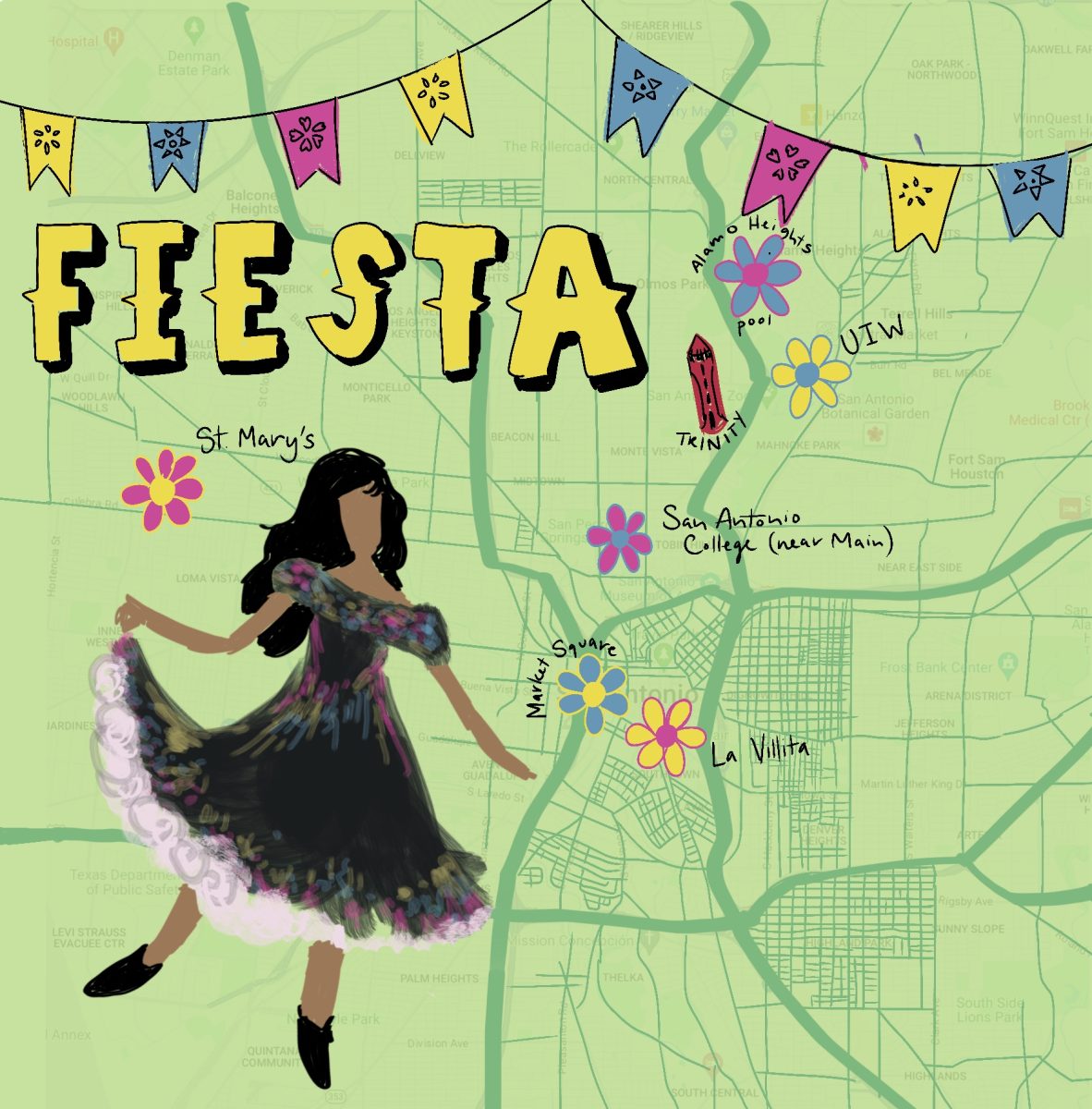illustration by Gabrielle Rodriguez
Two years ago, I bought a plane ticket and flew to the United States for the first time. I did not know anyone and felt detached from this new culture that I have to emerge myself into for the next four years. Every day, I feared going into the dining hall and eating by myself. About two weeks in, my hallmates asked me to eat with them and I started liking the dining hall more. After that, people began to bring snacks with them to pass around. And as we all shared food together, we also started talking more about ourselves, we bonded on our food preferences and also our different cultural backgrounds, the different foods that we have tried in our lives.
That was a reminder to me about the importance of sharing food. Food is nourishment. It’s energy. It’s something we all need to do, and enjoy doing. And for international students, talking about food was the first step to getting acquainted with the culture and the next step in getting to know each other. In every culture around the world, shared meals with friends or family are a way of connecting with each other. Talking about the day. Getting and giving encouragement. Making plans together.
So that brings up another question. Are shared meal times slipping through the cracks at your house? Although it is still far from Christmas, the celebration makes one think about sharing and taking part. Christmas time includes cooking traditional meals and sitting at the same table with family, relatives, and friends. Delicious scents emanate from the kitchen as homes filled with familiar smells that simply make us feel good. The blustery and chilly days of winter often keep us indoors. It may be a memory from a grandmother, a favorite chocolate brownie recipe or a pot of aromatic tomato and basil soup that ensures we gravitate to the kitchen. It’s about familiarity, feeling connected and the comforts of home. Crisps and crumbles made from the abundance of apples gathered in the fall can be baked, stored in the freezer and consumed all winter long, preserving the memory of a fun apple-picking day at the orchard. Whatever memory that stays with you, there is something very special about sharing the experience with your loved ones, sitting down together with family and friends to share a meal, no matter how small or insignificant the offerings.
The idea of commensality — sharing a meal with someone, eating and drinking together behind the same table — is one of the most important manifestations of sociality in all cultures. Eating together confirms the sense of belonging, being part of a community. Offering food, no matter how plain, to a stranger is part of elementary hospitality in most cultures. Dinners spent together create and recreate families, friendships, and business relations. Born and raised in Vietnam, I have been disciplined to always be present at the table, to say the greetings before meals, and also clean up after that. Who’s invited? Who sits next to whom? What do the people around the table talk about, and what themes do they avoid? A shared meal is a social event where thoughts, experiences, and emotions are shared. On a more covert level, acceptance or distance towards others is being expressed, as well as respect or disdain.
The cultural rules and etiquette of eating are connected to a shared meal. Family dinners teach us more than just food-related values and dining conventions. We also learn moral virtues, such as generosity, discipline, and respect. Good manners are related to the rules of sharing as well: offering food to others, waiting after others, not taking portions that are too large.
“One doesn’t talk while eating!”, “Don’t slurp!”, “Don’t play with the food!” You have probably heard all of these. Have you ever thought about which cultural values have brought along rules such as these or where they come from? For example, slurping while eating noodles is well accepted in China and Japan, as it is a sign that the food is delicious and a way to praise the cook. Still, one has to be able to slurp in a cultured way!








